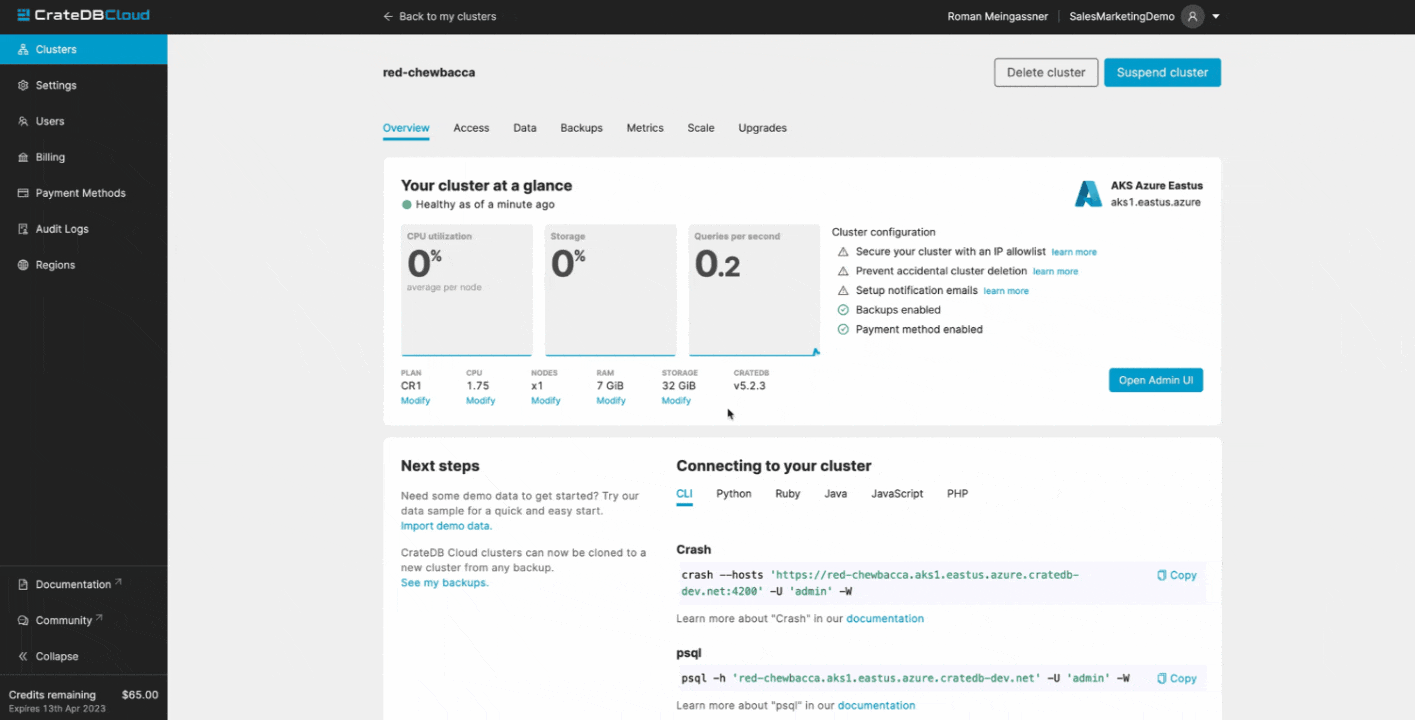Cloud-based time series solutions are revolutionizing the way businesses operate. These cutting-edge solutions provide the capability to analyze data and offer the freedom and flexibility to do so from anywhere, empowering businesses to make data-driven decisions.
Benefits of a Cloud time-series database
Like any time-series database, cloud time-series databases offer a dynamic and scalable platform that effectively manages, analyzes, and uncovers insights from time-series data.
A Cloud time-series database is designed to efficiently store, retrieve, and analyze time-stamped data in the cloud. It excels at managing large volumes of time-series data. That is generated by various sources such as IoT devices, sensors, and more. These databases usually offer advantages such as scalability, reliability, and fast data processing, which are crucial for real-time applications.
Additionally, cloud time series databases are generally designed to be accessible from anywhere with an internet connection, which is one of the significant advantages of using cloud-based solutions.
CrateDB Cloud: A top-performing Cloud time-series database for real-time data processing
CrateDB Cloud is a purpose-built time-series database solution and excels in efficiently handling time-series data. Its architecture and indexing mechanisms allow it to store, query, and analyze timestamped data, making it the perfect choice for use cases that demand real-time insights.

Here are several key reasons why it stands out as a top-performing cloud time series database for real-time data processing:
- Multiple infrastructure providers: CrateDB can be easily deployed on a range of cloud platforms, including Amazon AWS, Microsoft Azure, or Google Cloud Platform. You can also connect your own Kubernetes cluster to your central management plane.
- Scalability and high ingestion rates: With its ability to seamlessly expand data infrastructure as needs grow and handle high ingestion rates, CrateDB Cloud offers businesses the perfect scalable database managing applications that generate large volumes of time series data, including IoT sensor networks and monitoring systems.
- Real-time analytics: CrateDB Cloud enables businesses to perform complex queries, aggregations, and calculations on their time series data effortlessly. This eliminates the need for extensive data preprocessing or reliance on external analytics tools, allowing businesses to easily gain real-time insights and make data-driven decisions.
- Data synchronization: CrateDB Cloud automatically synchronizes all or portions of your data between the nodes of your cluster – or between multiple clusters - no matter where they are deployed.
- Data security: Data security is a top priority for CrateDB Cloud, with a focus on safeguarding time series data and ensuring that it is accessible only to authorized users. The platform offers robust features such as encryption, authentication, and role-based access control, providing businesses with peace of mind knowing their data is protected and CrateDB Cloud is ISO 27001 certified.
- Managed services: CrateDB Cloud efficiently handles all routine tasks, including data backups, rolling updates, and maintenance, allowing businesses to concentrate on their core operations.
- Integration and ecosystem: Thanks to its PostgreSQL compatibility, CrateDB integrates with many tools. CrateDB Cloud seamlessly integrates with programming languages, analytics tools, and data visualization libraries, simplifying end-to-end data solution development and enabling businesses to leverage their existing tech stacks.
- Community and support: The CrateDB developer community provides comprehensive documentation and support resources. Users can access tutorials, forums, and community-contributed extensions to resolve issues.


